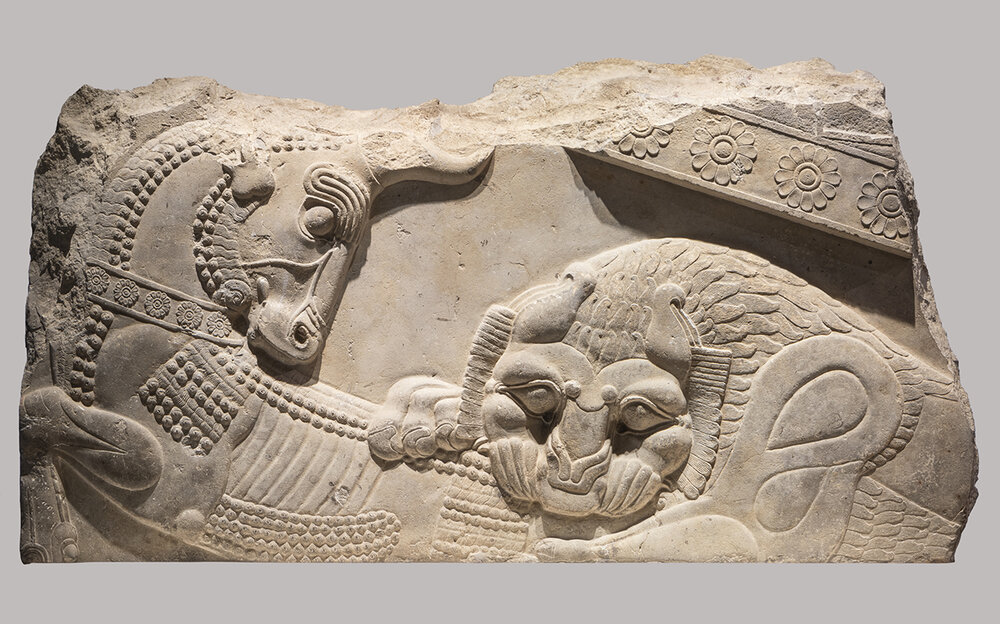U.S. exhibit offers visitors time travel to Achaemenid capital

TEHRAN – A magnificent exhibition of ancient Iranian arts, which is currently at the Getty Villa Museum in Los Angeles, offers visitors a time travel to the former Achaemenid capital of Persepolis by the means of special music and digital art.
The exhibition includes an immersive digital experience of the palace of Persepolis where visitors can revert back in time and walk through the capital’s palace in its original, sustained form, further complementing the decorative artifacts, according to organizers.
Furthermore, online visitors have the opportunity to explore a 3D re-creation of Persepolis to feel the palaces, terraces, audience halls, and chambers of the massive UNESCO World Heritage located in southern Iran.
The exhibition titled “Persia: Ancient Iran and the Classical World”, examines the connections between ancient Persia and its rival powers of Greece and Rome. The event is organized in close collaboration with a cultural partner, the Farhang Foundation, and an academic partner, UCLA’s Pourdavoud Center for the Study of the Iranian World.
It displays artifacts sourced from various museums including the British Museum and the Louvre Museum. Moreover, it focuses on cultural and artistic connections between these ruling powers, said Jeffrey Spier, senior curator of antiques.
“The Getty Villa has mostly Greek, Roman, and Etruscan classical art, but we feel we really need to involve the other cultures that Greece and Rome interacted with because the ancient world is a very interconnected place,” Spier said. “The first one (exhibition) a few years ago was Egypt. … Persia is the other great culture.”
Running until August 8, the exhibition is split into three distinct galleries representing the different ruling eras – the Achaemenid, Parthian, and Sasanian empires – all evoking their period’s exceptional character within their designated galleries, Spier said.
To embody the historical themes of royalty and power, the Getty Villa incorporated cultural objects that exemplify Persia’s contemporary influence, including luxury silver and gold vessels and golden swords that were royal gifts of status as well as stone reliefs from the palace of Persepolis, he said.
One of the highlights is an immersive digital experience of the palace of Persepolis where visitors can revert back in time and walk through the capital’s palace in its original, sustained form, further complementing the decorative artifacts, said Alireza Ardekani, collaborator and executive director of the Farhang Foundation.
To preserve the authenticity of the ancient construction, many scholars and hours were involved in trying to achieve architectural accuracy through historical referencing, Ardekani said.
“When you have an ancient artifact that you’re looking at, the sound would be so helpful to evoke a lot of questions and our curiosity, our imagining, what life was like in Iran,” Amoozegar said.
While Amoozegar said musical evolution renders it difficult for historians to explicitly identify what was played thousands of years ago, the exhibition music draws from Persian melodies and poetry from the past.
Persepolis ranks among the archaeological sites which have no equivalent, considering its unique architecture, urban planning, construction technology, and art. Persepolis, also known as Takht-e Jamshid, whose magnificent ruins rest at the foot of Kuh-e Rahmat (Mountain of Mercy) is situated 60 kilometers northeast of the city of Shiraz in Fars province.
The city was burnt by Alexander the Great in 330 BC apparently as revenge on the Persians because it seems the Persian King Xerxes had burnt the Greek City of Athens around 150 years earlier.
AFM
Leave a Comment